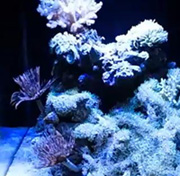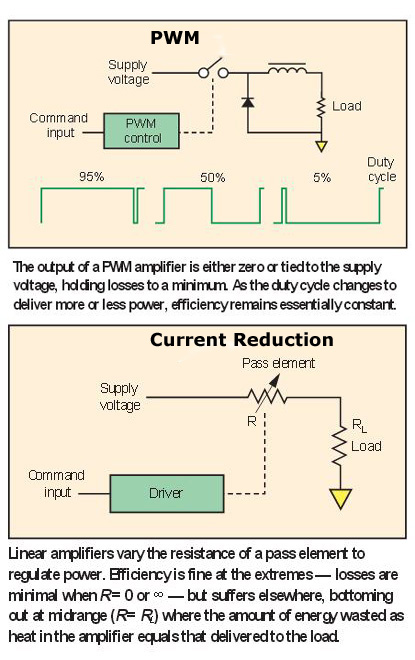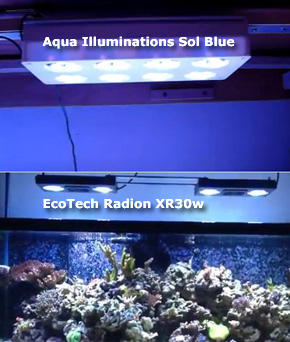 I will look at three important facts of LED Aquarium Lighting:
I will look at three important facts of LED Aquarium Lighting:
(1)Pulse Width Modulation versus Current Reduction
(2)RGB Features
(3)Emitter Technology, Cool White Emitter Use and More
Revised 12/14/16
OVERVIEW
———-
Important update (1-14-15) about EcoTech lack of disclosure about spectrum control over their LED fixtures. See end of article
Rather than review actual equipment, I am going to look at the science behind what goes into Aquarium LED Lighting, in particular for reef or high light planted freshwater aquariums.
To be blunt, my reason is simple, it’s to hopefully stem the tide of misinformation that many forums in particular seem to be spreading, whereby otherwise intelligent people will recommend clearly inferior light despite facts of known science.
Then, rather than discuss the facts, many will resort to “Straw Man” personal attacks on persons counting myself arguing that I or others are biased.
To this argument, the simple answer back is, “OF COURSE I’M BIASED”!! If both the science and results say something is better, why would I use the inferior equipment in my clients aquariums?
The one forum that really stands out is “Reef Central” where a comment I read elsewhere on the internet backs up my own observations and that is, if you disagree with EcoTech LEDs, this will bring out the “ban hammer” for RC faster than you can turn your head!
Pulse Width Modulation versus Current Reduction:
There are two major approaches to dimming/controlling LEDs: PWM and Current Reduction [aka linear or analog, reduction of electrical current over distance].
PWM dimming greatly reduces color spectrum changes in the LED with varying brightness levels or ramping up or down.
Since the LED utilizing PWM essentially runs at a constant current when it’s on and at no current when it is off. However, PWM comes at the additional expense/cost to create the PWM waveforms.
While LEDs are complex semiconductors that convert an electrical current into light, one of the advantages are that LED emitters can be modulated (turned off and on) at high speeds without degradation, which thus favors PWM.
Reference: Light-emitting Diode (LED)
One potential negative of PWM is some switching “noise” can be produced, but this is easily filtered with an inductor and a capacitor, the result is any noise is very minimal and normally drowned out by water of the aquarium.
More importantly, this very minor potential negative is often exploited by less than honest internet articles or especially forums as a way to distract from the facts that the use of linear or analog dimming employed by the vast majority of aquarium fixtures is vastly inferior, wasting a considerably amount of PUR spectrum and light energy as heat!!!!
Any almost inaudible noise from LEDs controlled via PWM is going to pale in comparison to the fan noise due to the heat LEDs create by using “reduction of current” dimming, which produces more excess heat!
In depth reading about this subject for naysayers (this means you Reef Central & Other Forums!):
How to Dim an LED Without Compromising Light Quality
“Current Reduction” or aka “reduction of current” or “analog” dimming can use a simpler and thus less expensive circuit, but the variable current supplied to the LED means that the regulator supplying the current to the LED must absorb any power not supplied to the LED.
This additional power arises from the difference between the raw supply voltage powering the LED/regulator subsystem and the voltage across the LED. This results in wasted heat energy that then often requires cooling fans.
This wasted heat equals wasted energy and is why ANY LED driven by “Current Reduction” WILL REQUIRE a higher wattage of energy input to provide equal PUR output, thus partly defeating the purpose of purchasing an LED to save energy.
As well many have reported break downs or even fires with these cooling fans.
JUST AS IMPORTANTLY, “current reduction” (analog) dimming may be inappropriate for applications such as aquarium reef or planted aquariums that require a constant color temperature. An LED emitters color WILL change depending on the current driven through the device.
Notwithstanding, many of the most popular aquarium reef LED lights utilize Current Reduction; this includes the Current Satellite LED, EcoTech Radion, Aqua Illumination, TaoTronics, Ocean Revive, among others.
Also notwithstanding, some controllers utilize modified PWM similar to how some A/C to D/C Inverters use modified sine wave conversion versus true since wave conversion.
The Current Controller is one such example (the price often tells the story here).
Further Reading:
–Aquarium LED Reviews; EcoTech
–Review of Ocean Revive & Evergrow LED Lights for Reef Aquariums
OK, ready readers for my bias?
The aquarium LED light that utilizes PWM is the AAP/TMC AquaRay, which has enjoyed considerable popularity in Europe and in fact has been around longer than many of the popular LEDs, but thanks to excellent marketing by EcoTech, Evergrow, Ocean Revive, and others, as well as a public fed by this marketing and forum posts that refuses to read any science based information, it is not as well known in North America.
Currently, the STILL industry leading AquaRay is the ONLY aquarium LED on the market to fully utilize PWM, with the only other opinion being DIY. NONE OF THE POPULAR BRANDS DO!
This is part of the reason the AquaRay LEDs do NOT need fans that break down regularly for heat control!
This is not to say that these before mentioned LEDs cannot keep a reef aquarium, as to say so would immediately disqualify anything I have stated since many advanced aquarium keepers have done quite well with these other fixtures, I am only stating that these are not maybe the best and that anyone looking into a new reef aquarium LED fixture needs to do more homework than just reading forum posts.
See the graph below for a better visual understanding:
Please also reference:
*Aquarium Lights, Lighting Information
*Aquarium Lights, Which are best?
And my post dealing with the wide difference in LED warranties and how manufacturers handle these:
*Aquarium LED Warranties; Reef or Planted
RGB Features versus PUR:
This is another popular feature, that is nice from the human prospective, but has no bearing on reef marine aquarium life or planted freshwater aquariums.
Controlling your Red, Green, Blue emitters and thus the term RGB has no bearing on exacting nanometer spikes essential to light sensitive aquatic life.
The misinformation here arises from the over use of PAR meters which will NOT tell the difference in an aquarium LED light using RGB features and one utilizing more exacting LED emitters.
What is important is PUR (aka Photosynthetically Useful Radiation, Useful light), not as much PAR.
This of course can vary from plant to plant and coral to coral, depending upon the natural strata of water these aquatic life forms are found in.
The Finnex Ray 2 is a popular LED in some planted aquarium forums, but again by using cheap Chinese made Epistar emitters in large quantities, it achieves excellent PAR readings, but totally misses the boat when it comes to the all important PUR.
Why else do you only see PAR noted for these LEDs and not PUR?
If you are actually still considering a Finnex LED, you need to read this article that compares LED warranties; if this does not convince you as a reader that this is a LED that no one should purchase, I have some beach front property to sell you on the Arctic Coast of Alaska:
Aquarium LED Warranties, Including Finnex
Further References:
*LED Aquarium Lights, Lighting; RGB
*PUR Versus PAR in Aquarium Lighting THIS IS A MUST READ WEB ARTICLE!!!
Emitter Technology, Warm White, Cool White Emitter Use and More:
This is one of the more comical aspects of many who promote inferior LED Lights, and that is the use of Cool White and Warm White LED emitters.
This includes the EcoTech LED’s use of Cool White emitters and the Maxspect Mazarra LED’s use of Warm White emitters.
As I have read elsewhere, these same persons recommending these two LED before mentioned LED fixtures would NEVER recommend a T5, T8, CFL or any other aquarium light that is either “warm white or “cool white”, YET SOMEHOW THESE LEDS GET A PASS ON THIS POOR LOGIC???
While these before mentioned LEDs along with many others such as the TaoTronics have certainly proved themselves in aquarium lighting, they are doing it an expense of the best emitters, the best controllers/drivers, and gimmicky features that only lower light quality.
All at a higher electrical cost for results these LEDs do achieve as well as a lifespan as much as 1/4 of the better builds.
Many will attempt to use a PAR meter to prove their LED quality, but again this can be very misleading when one looks at the facts.
Please Again Reference:
*http://www.aquarium-pond-answers.com/2012/03/pur-vs-par-in-aquarium-lighting.html
The result is extra heat and a requirement for more electricity used for the same results.
THE FACTS ARE, an EcoTech Radion at 140 watts is going to product less usable light energy (PUR) Per Watt than a 30 Watt AquaRay Ocean Blue NP 1500
To say your EcoTech Radion at 140 watts produced better results is an apples to oranges comparison. When PER WATT, the numbers says otherwise.
In the end, the facts are inarguable, despite what many might say in forums that often result in attacking the authors of articles such as this or making up silly & inaccurate statements about noise from fixtures employing PWM such as one I read on Reef Central, then further resulting in others copy and pasting this BS all over the internet!!!!
Important Update
A another professional in the field sent me an interesting email about his interaction (or lack of) with EcoTech customer support and control over the spectrum (PWM) for their LEDs. This professional understands the importance of PWM and wanted to understand EcoTech “control”, because of his interest in obtaining new LEDs. The professional emailed EcoTech, and simply asked them how they control their spectrum of the LEDs. See the screen shot of the email sent to EcoTech:
So, from what I have gathered, this professional emailed EcoTech and from my understanding, STILL has not received a response back back to answer the question. First, WHERE IS ECOTECH SUPPORT? Moreover, WHY ARE THEY NOT ANSWERING THE QUESTION? AT LEAST MAKE SOMETHING GOOD UP ECOTECH! Anyone reading this article can take a guess. CAUSE THEY DON’T CONTROL SPECTRUM SHIFT IN THEIR LEDs!
HOW’S A PERSON TANK LIGHTING IS BEING AFFECTED??? No one knows, and that’s the point! People put so much effort into their reef tanks, why not provided them with the best, or is colored emitters and user gimmicks your game?
People can be getting far more USEFUL light energy with their aquarium LED lighting! Since this article is so popular already, I’m hoping people get the memo and EcoTech gets the hint. CONTROL YOUR SPECTRUM PEOPLE! Your reef and plants deserves it.
OTHER REFERENCES:
*http://fab.cba.mit.edu/classes/MIT/961.04/topics/pwm.pdf
*http://www.digikey.com/us/en/techzone/lighting/resources/articles/how-to-dim-an-led.html


